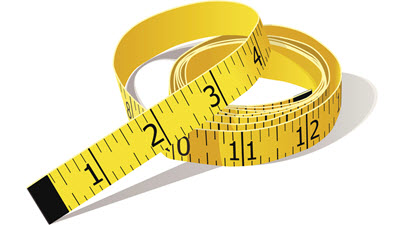Taking your goods to a trade show is a smart way to meet a lot of new customers face to face. According to the Center for Exhibition Industry Research, 92 percent of trade show attendees are looking for new products. About 46 percent of attendees are in upper management. That means they have the power to make buying decisions on the spot. If you make a great impression on this influential group, it can lead to sales long after the event.
At trade shows, a great product doesn’t always equal great sales. Think of a trade show as a giant competition with everyone shouting “look at me!” Some people come with a buying list. Others just have money to burn. Customers have many options, so they need a good reason to approach your booth. A weak show display can set you up for failure, while a great design can attract a crowd. To make the most of your visit, boost sales with these smart trade show display ideas.

Put functionality first
A good trade show booth gets your customers to act. If your goal is to sell products, your display should make them look appealing. If the goal is awareness, your display should get customers to learn about your business. Think about what you want to achieve, and create a list of your functional needs. For example, do you need:
- Tabletop product displays or freestanding fixtures?
- Open space to run demos or showcase large products?
- Room for traffic flow?
- Seating for staff or customers?
- A portable or collapsible booth?
- A freestanding backdrop?
- Storage for supplies or extra products?
Firsthand experience is always better than guessing because every environment is different. At big trade shows with wholesalers, vendors may have huge signs and few products on display. At a farmer’s market, it’s common to lay everything out on front-facing tables. Visit trade shows to see how successful vendors set up their booths. Social media sites, such as Pinterest, are also good places to get trade show booth ideas.

Map out the space
Walking the line between order and clutter can be a challenge. It’s a good idea to look at everything you want to bring and plan how to fit it in the provided space. Check for any trade show rules that limit your display configuration. Some craft shows require a tent, while many trade shows offer a 10 x 10-foot or 10 x 20-foot space. Use your measurements to create a floorplan of your display. That way, you can decide the max size for tables and floor displays.
It’s tempting to go big, but an expensive trade show booth takes away from your profit. From a cost standpoint, it doesn’t make sense to buy a fancy booth if a simple one works just as well. So, go as small and simple as you can while still meeting your functional needs.

Create an eye-catching appearance
Put yourself in an attendee’s shoes. Would you try to read tiny print on a display sign when you’re walking through a space filled with vendors? Or do your eyes immediately go to booths that tell a story with bold, visible graphics? To make an impact, tell customers everything they need to know in under 10 seconds.
Focus on these key elements:
- A strong visual story. Use your backdrop to show how your product or service solves a problem. A picture of a family enjoying a farm-fresh meal is more powerful than a long written message. Try to sum up the key benefits with one large image, or create a montage if you have wide-ranging services.
- Simple, bold text. Make your company name, contact info and headline easy to see from far away. Think about what you want people to remember most about your product. Create a simple headline that conveys your message in as few words as possible. Don’t forget to display your company name in a prominent spot, such as the top of the display. Too often, business owners invest in nice signs, but put them where no one can see them.
- Brand story. Unique design touches can get more customers interested in your brand. This is especially true at crafts fairs, where people value creativity and authenticity. Let’s say you’re a carpenter. A handmade wooden display is another way to promote your skills. An interactive display is useful if testing your products is essential to sales.

Think horizontally and vertically
When selling products at a show, you need to wow customers with your arrangement. Most passersby won’t stop at your trade show booth if they can’t tell what you’re selling. With that in mind, think about how you can use horizontal and vertical space. Flowing drapes or carpets would look better hanging to showcase their designs.
Whatever you choose, customers shouldn’t have to reach far into the space to pick up a product. Hanging racks, glass cases, floor stands and tabletop stands are great ways to display products upright. You can also use pegboards, cake stands, and pallets to make your own small displays. Avoid laying any products flat on the table. Display them at an incline for comfortable browsing. Vary the heights of your displays to get the most value out of your space.
Be transparent when you have fixed prices. Customers are more likely to walk away if they have to ask you about each product. Put product tags on individually priced items. You can also post price sheets if you price by category or purchase volume.

Sell an experience
Just like in a store, branding is a big part of winning customers at trade shows. Consider the elements you normally use to tell your story. Do you use unique materials? Do you have an interesting production process? What tactics do you use to connect with customers? You can bring many of these elements into your display. For instance, displaying products in old baskets, crates, or drawers can create a rustic look.
You may not get a chance to talk to every customer who looks at your display. So, try to answer the most common questions with images and text. This is where you can use smaller print because the goal is to hold the attention of people who stop at your booth. Use signs with brief messages to display product benefits, such as handmade, family-owned, or eco-friendly.
Another timeless trick to attract business is to keep your display looking full at all times. A half-empty booth may make customers think they’re getting the leftovers. Keep extra products on hand, and put out more as merchandise sells.
Give customers a way to find you
The whole point of investing in a trade show is to build relationships. So, don’t let customers leave without your contact info. Put business cards on the display, and include one with each sale. Ask customers for their contact info whenever you can. Many vendors offer coupons or promotional items to entice buyers. No matter what strategies you use, focus on showing what sets your business apart. Customers who don’t make a purchase today could become loyal clients in the future.
> Ready to get started? Take a look through some promotional products to get ideas on how to stock your trade show booth.







